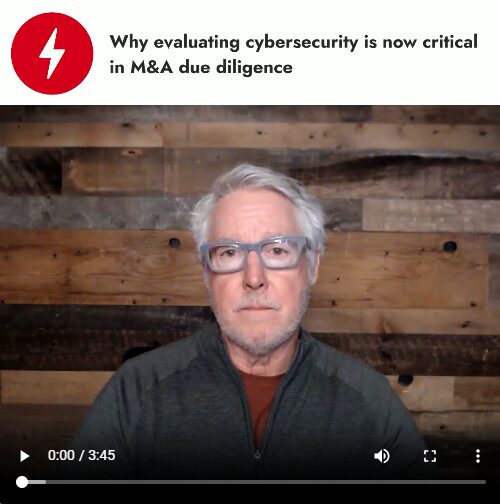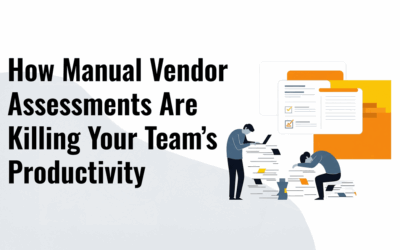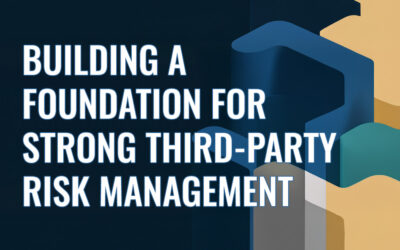Private equity firms face unprecedented cybersecurity challenges as Boards of Directors demand direct accountability from management teams for security postures. Modern threat actors specifically target sensitive financial data through third-party vendors, creating critical vulnerabilities in private equity operations.
Third-party vendor relationships expose firms to complex compliance requirements and regulatory obligations, each carrying substantial penalties for breaches. Security teams must execute thorough vendor risk assessments to effectively control breach probability and potential impact. Failed vendor oversight mechanisms threaten data security, organizational reputation, financial performance, and client trust.
This technical analysis delves into essential vendor security management elements – from attack vector analysis to advanced monitoring system deployment. Security leaders will discover battle-tested strategies for hardening vendor security frameworks and establishing incident response protocols that shield portfolio companies from sophisticated cyber threats.
Understanding the Vendor Security Threat Landscape
Modern threat actors demonstrate sophisticated tactics by targeting vendor security infrastructure, creating cascading breach scenarios across multiple organizations. Security analysts report alarming statistics – 54% of organizations fell victim to software supply chain attacks within twelve months, signaling heightened adversarial capabilities.
Common attack vectors through third-party vendors
Security teams must defend against multiple third-party attack vectors:
- Credential theft operations targeting vendor authentication systems
- Zero-day exploit chains within vendor software deployments
- Advanced social engineering campaigns exploiting trusted vendor channels
- Business continuity failures from environmental disruptions
- Fourth-party risk propagation through interconnected supply chains
Recent Private Equity Vendor Breach Case Studies
Technical analysis reveals sophisticated breach mechanics – LockBit operators weaponized Citrix appliance vulnerabilities, compromising critical financial data across multiple institutions. The MOVEit zero-day attack demonstrated unprecedented scale in 2023, affecting 2,300 organizations and exposing 65 million records, with financial impact surpassing USD 10 billion.
Impact of supply chain attacks on portfolio companies
Portfolio companies face mounting financial pressure from supply chain breaches. Data shows supply chain disruptions in 2023 generated average losses of USD 82 million per organization across key sectors. Security audits expose concerning vendor relationships – 98% of organizations maintain connections with previously breached third parties.
Technology and telecommunications providers demonstrate particular susceptibility, with third-party incidents accounting for 43% of recorded breaches. Software supply chains represent the primary attack surface, responsible for 75% of third-party compromise events.
Implementing Continuous Vendor Monitoring
Continuous vendor monitoring stands paramount for private equity firms safeguarding portfolio assets against sophisticated cyber threats. Security architects must orchestrate multi-layered monitoring technologies to establish robust defensive perimeters.
Real-time security assessment tools
Advanced assessment platforms deliver critical visibility into vendor security postures through persistent monitoring capabilities. These sophisticated tools scrutinize security controls across distributed networks, endpoint clusters, and cloud infrastructures, exposing potential attack surfaces. Security metrics reveal compelling results – organizations deploying real-time monitoring solutions report 55% fewer breach incidents.
Automated vulnerability scanning systems
Automated scanning systems execute methodical infrastructure assessments to uncover security weaknesses within vendor environments. Purpose-built detection engines identify anomalous patterns and emerging threats, triggering immediate security alerts. Current-generation scanning platforms demonstrate remarkable capability – detecting 1,636 potential attack signatures weekly.
Vendor security scoring metrics
Security teams rely on quantitative scoring frameworks to evaluate third-party risk profiles. Critical scoring elements encompass:
- Network defense architecture
- Mail system security hardening
- Web application protection measures
- Anti-phishing infrastructure
- Brand security mechanisms
- Security attestation data
These scoring frameworks enable precise vulnerability prioritization, driving focused remediation strategies. Performance data shows automated scoring platforms reduce assessment cycles by 30%.
Security leaders recognize continuous monitoring as a cornerstone of modern vendor risk management. Strategic integration of real-time assessment capabilities with automated scanning creates an adaptive security ecosystem, optimizing resource utilization while maintaining rigorous vendor oversight.
Building a Robust Vendor Incident Response Plan
Security leaders must architect battle-tested incident response plans to counter vendor-related security breaches with precision and speed. Financial data validates this approach – organizations deploying tested incident response protocols reduce breach costs by USD 2.66 million.
Early warning detection systems
Advanced detection mechanisms constitute critical defense infrastructure against vendor compromises. These sophisticated platforms employ algorithmic monitoring to flag suspicious patterns and security anomalies. Technical measurements prove effectiveness – organizations report 27% faster threat identification with automated detection systems.
Communication protocols during breaches
Security architects must establish precise communication frameworks for breach scenarios. Critical protocol elements include:
- Strategic vendor communication channels
- Pre-configured notification systems
- Severity-based escalation matrices
- Regulatory documentation protocols
- Stakeholder notification frameworks
Recovery and containment strategies
Breach containment and recovery operations demand surgical precision. Security teams must execute three mission-critical phases:
Immediate containment protocols require swift deployment of system isolation procedures and credential revocation mechanisms to halt unauthorized access propagation.
Specialized forensic units must launch comprehensive breach investigations to map attack vectors and impact zones. Technical studies demonstrate 30% faster incident identification with dedicated forensic teams.
Recovery operations follow predetermined data recovery processes and system restoration protocols. Performance metrics show that tested recovery frameworks reduce breach-related expenses by 39%.
Strengthening Your Vendor Security Framework
Security architects must design multi-layered defense frameworks to shield portfolio investments from sophisticated cyber threats. A battle-tested vendor security framework demands precise contractual controls coupled with rigorous assessment protocols.
Security requirements in vendor contracts
Contract security specifications form the bedrock of vendor risk mitigation. Mission-critical contractual elements must address the following:
- Security governance architectures
- Software development security standards
- Asset control mechanisms
- Physical security infrastructure
- Personnel vetting protocols
- Data protection frameworks
- Downstream vendor security requirements
Technical measurements validate this approach – organizations enforcing standardized security terms report 65% fewer security incidents.
Access control and authentication protocols
Zero-trust access mechanisms define modern vendor security architecture. Security teams must deploy role-based access control (RBAC) systems to enforce granular data access patterns. This defense-in-depth strategy minimizes attack surfaces while hardening systems against unauthorized access.
Multi-factor authentication (MFA) protocols represent non-negotiable components of vendor security programs. Performance metrics demonstrate effectiveness – MFA deployment reduces unauthorized access attempts by 30%. Advanced biometric systems and hardware security tokens provide additional protection layers for critical vendor relationships.
Regular security assessment schedules
Security teams must execute methodical assessment protocols across vendor ecosystems. High-risk vendors demand quarterly security audits, while moderate-risk relationships warrant biennial evaluations.
Security architects should maintain authorized vendor registries and conduct strategic supplier security summits. These systematic assessments expose potential vulnerabilities before threat actors can weaponize them.
Modern vendor security frameworks demand constant evolution against emerging threats. Technical analysis proves effectiveness – organizations conducting regular vendor assessments achieve a 40% reduction in risk exposure.
Conclusion
Security leaders face unprecedented challenges protecting portfolio assets from third-party cyber threats. Technical measurements validate structured approaches – organizations deploying comprehensive vendor security frameworks report 65% fewer security incidents, while tested incident response protocols reduce breach costs by USD 2.66 million.
Effective vendor security architecture demands sophisticated defensive capabilities. Advanced monitoring systems, automated vulnerability detection, and quantitative risk metrics enable proactive threat identification. Zero-trust principles, enforced through stringent access controls and regular security audits, create robust defense mechanisms against unauthorized system access.
ProcessBolt delivers enterprise-grade vendor risk management through its advanced security platform. This sophisticated architecture provides real-time threat analytics and continuous vendor monitoring capabilities, detecting security posture degradation between formal assessments. Security leaders should connect with ProcessBolt’s third-party risk experts to explore cutting-edge attack surface monitoring capabilities.
Portfolio protection demands meticulous attention to vendor security protocols. Security architects who deploy multi-layered frameworks, continuous monitoring systems, and battle-tested incident response plans significantly reduce third-party risk exposure while preserving operational efficiency. These defensive measures, reinforced through systematic assessment protocols, shield portfolio assets from increasingly sophisticated cyber threats.





